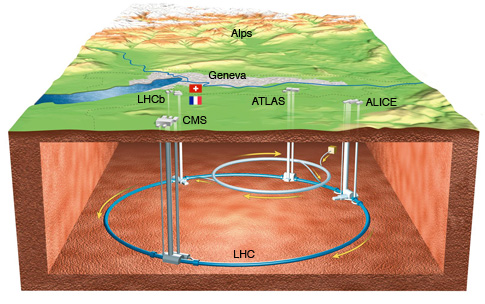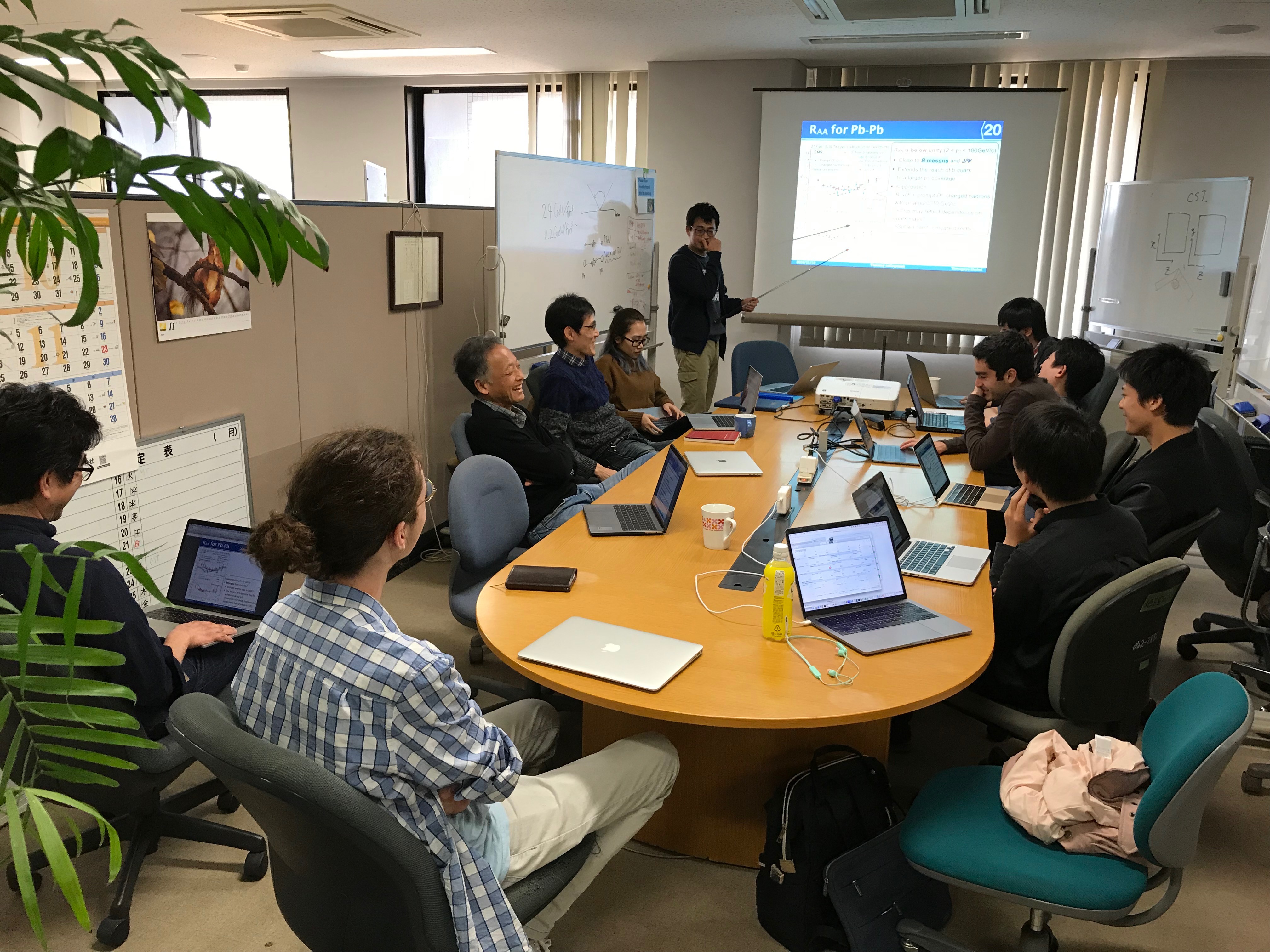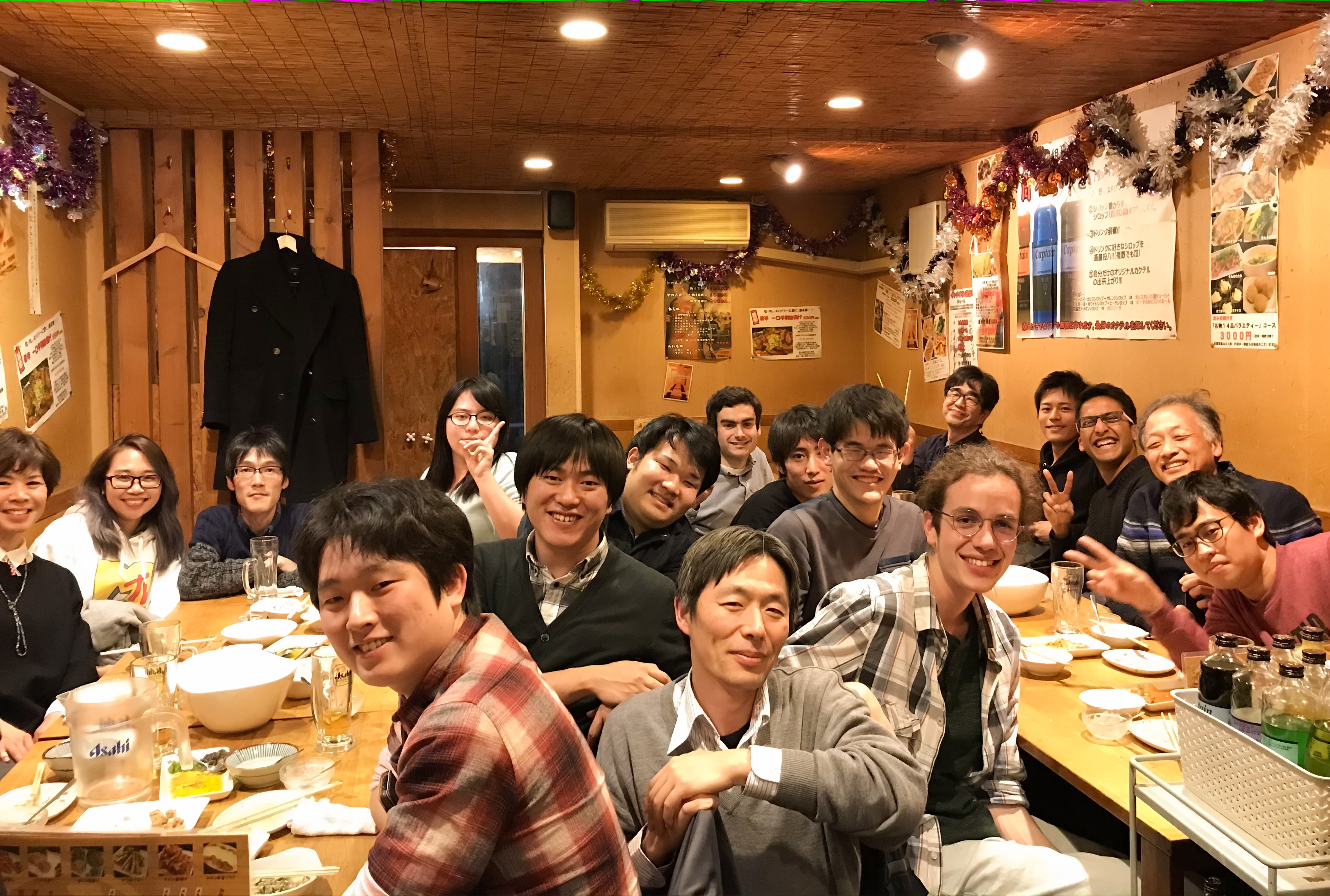Motivation
We aim to reveal the nature of elementary particles with high enegy and high intensity accelerators.
Research
What is the Elementary Particle ?
The world is full of various substances. All the substances consist of atoms.
Also atoms consist of electrons and nuclei.
At present quarks, which compose protons and neutrons, and fermions (electron, muon, etc.) are the smallest components that constitute substances.
We call these smallest components "elementary particles".
Also atoms consist of electrons and nuclei.
At present quarks, which compose protons and neutrons, and fermions (electron, muon, etc.) are the smallest components that constitute substances.
We call these smallest components "elementary particles".
Search for elementary particles
By accelerating particles to high energy and colliding them together or hitting a target with them, we can produce heavy particles.
They subsequently decay into lighter particles as well as the elementary particles.
This process is a key to investigate interactions and properties of the elementary particles.
They subsequently decay into lighter particles as well as the elementary particles.
This process is a key to investigate interactions and properties of the elementary particles.
This asymmetry suggests the existence of new physics which violates symmetry between particles and anti-particle (CP symmetry).
We are searching for CP-violating rare Kaon decay \(K_L\to{\pi}^0\nu\overline{\nu}\) to discover the new physics.

Data Aquisition
We finished 2015 data analysis. Physics data is being taken.
Osaka Group
Right figure shows the CsI Electromagnetic Calorimeter consisting of 2716 CsI crystals, which is used to detect signal events.
All other detectors are designed to suppress background events.
We will install new silicon sensors (MPPC) onto the CsI calorimeter to reduce more background events.
All other detectors are designed to suppress background events.
We will install new silicon sensors (MPPC) onto the CsI calorimeter to reduce more background events.

We can produce and study massive particles by using the highest enegy proton-proton collider, and observe them with the ATLAS detector.
The ATLAS detector designed for various physical processes enables us to explore wide range of physics.
In 2012, We discovered the Higgs boson, which is the origin of mass.
Today, the ATLAS group is working on measurement of the Higgs boson and also searches for Supersymmetric (SUSY) particles that may give us a hint to reveal the dark matter in the universe.

Osaka Group
The ATLAS detector consists of inner trackers, calorimeters, and muon trackers.
The oasaka group develop silicon deterctors in the inner tracker for future upgrade of LHC.
Futhermore, Ph.D. students stay at CERN and work on analysis of physicis data.
The oasaka group develop silicon deterctors in the inner tracker for future upgrade of LHC.
Futhermore, Ph.D. students stay at CERN and work on analysis of physicis data.

Students
Core time
No core time except weekly meeting and some seminars.
Equipments Students and researchers share a large room (H501).
We have our own desk and a laptop PC (Mac or Linux).
Many textbooks on theory, experiment, programming and electronics are available.
A refrigerator, kettle, microwave are available.
Equipments Students and researchers share a large room (H501).
We have our own desk and a laptop PC (Mac or Linux).
Many textbooks on theory, experiment, programming and electronics are available.
A refrigerator, kettle, microwave are available.

In the first half term, they measure muon lifetime to learn how to use measuring instruments and how to analyze data with C++ program.
In the later half term, they decide a topic and work on their own graduation research.
They also have some seminars on particle physics and experimental technique throughout the year.
Master Students At the beginning of the master course, students choose between the KOTO or ATLAS experiment.
Many of them work on detectors R&D or data acquisition system.
If needed, they visit some institutes (such as J-PARC, KEK or CERN) for further studies.
Ph.D. Students Ph.D. students usually work on a physics data analysis.
Others
We discuss freely at anytime, even in drinking parties :)
Of course we usually have a chat as well !
Events We have a group tour once a year.
Last year we visited Ise-grand-shrine.
You can see our group photos.
Of course we usually have a chat as well !
Events We have a group tour once a year.
Last year we visited Ise-grand-shrine.
You can see our group photos.

Join us !
Everyone is highly welcome !
If you want to visit our laboratory, please contact any staff.
If you want to visit our laboratory, please contact any staff.